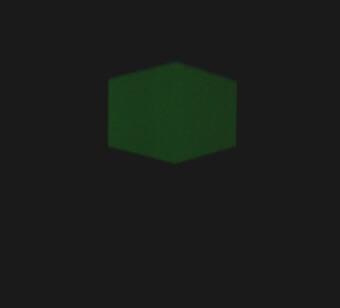
The Art of Enlightenment
Half an hour before the scheduled start of artist James Turrell's speech on "Plato's Cave and the Light Within," the fire alarm went off. The auditorium at Carnegie Mellon University was filled to capacity, and there were at least two hundred would-be attendees - some were pilgrims from as far away as Atlanta, others were apparently frat boys - queued up outside, hoping to get a piece of standing room. Naturally, no one indoors moved. Everyone assumed that a desperate Turrell fan had pulled the fire alarm to cause general chaos - and indeed, when we did file back in (after being forced to exit by increasingly insistent orders from security), there were several dozen more people in the room than there had been before. By the time Turrell started his talk, there were probably a hundred or so of these infiltrators, standing in the back or squatting in newly captured seats. The amusing disorder of the lecture contrasted sharply with the serene, even contemplative spaces Turrell creates in his art.
What is going on? What is drawing thousands of visitors to Pittsburgh's Mattress Factory museum to see the often difficult works of an obscure contemporary artist? And what explains the near-fanaticism of the fans - a gathering which, at the lecture at least, included sharp-eyed intellectuals, dreadlocked Phish types and devoted art groupies who compare Turrell's work with Angkor Wat and Abu Simbel?
James Turrell is an American artist, born in 1943, who for the last thirty years
or so has been investigating the properties of light in his art. Light is
hardly a new subject of artists' attention; as Turrell himself points out,
it has been a primary subject of Medieval painting, impressionism, Delacroix
and his followers, and countless others. What is new about Turrell is that
light is both the subject and the medium of his art.
Into the Light, the Turrell retrospective on view through the end of April
at the Mattress Factory, contains several pieces which are composed entirely of
projected light, others which are created by ambient light, and one ("Gasworks")
in which the visitor is placed into an MRI-like chamber in which strobe and colored
 lights produce visual effects which exist only in the mind.
The viewer/participant is physically and perceptually immersed in the
phenomena of light and vision themselves.
lights produce visual effects which exist only in the mind.
The viewer/participant is physically and perceptually immersed in the
phenomena of light and vision themselves.
Turrell explains his work primarily in the terms of perceptual psychology - the discipline in which he received his degree in the 1960s. He is interested, he says, in how we create the illusion of seamless reality out of a large set of distinct perceptual inputs. He wants to investigate the properties of visual perception, and describes (and executes) his work in scientific terms. Not unlike the pointillists, who conceived and described their work in terms of contemporary optical science, or or Jo Baer's late 1960s work drawing on the theory of Mach Bands, Turrell's rhetoric is the hard-nosed scientific one of art as optical experiment.
Most of Turrell's fans, though - at least judging from the crowd in Pittsburgh - have a different agenda. They use words like "visionary," "spiritual," and "transformative." They don't view Turrell's works as art to be looked at for insight into the neurological or psychological phenomena of vision, but as as environments for meditation, and embodiments of deeply powerful spiritual truths.



Zeek in Print
Buy your copy today
Germanophobia
Michael Shurkin
The Red-Green
Alliance
Dave Hyde
The Art of
Enlightenment
Jay Michaelson
yom kippur
Sara Seinberg
Josh Plays the Sitar
Josh Ring
Genuine Authentic
Gangsta Flava
dan friedman
saddies
David Stromberg
about zeek
archive
links